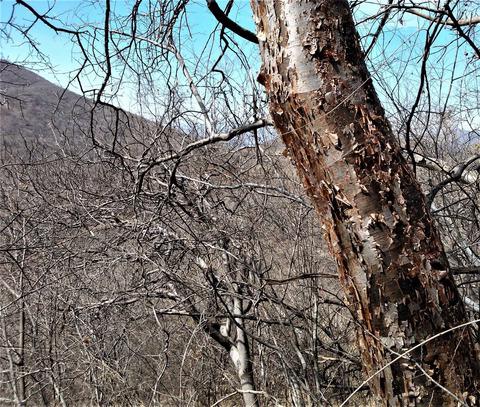Our official English website, www.x-mol.net, welcomes your feedback! (Note: you will need to create a separate account there.)
Atmospheric and soil drought risks combined shape community assembly of trees in a tropical dry forest
Journal of Ecology ( IF 5.5 ) Pub Date : 2020-01-16 , DOI: 10.1111/1365-2745.13355 Moisés Méndez‐Toribio 1, 2 , Guillermo Ibarra‐Manríquez 2 , Horacio Paz 2 , Edwin Lebrija‐Trejos 3
中文翻译:

大气和土壤干旱风险综合了热带干旱森林树木的形状群落组装
更新日期:2020-01-16
Journal of Ecology ( IF 5.5 ) Pub Date : 2020-01-16 , DOI: 10.1111/1365-2745.13355 Moisés Méndez‐Toribio 1, 2 , Guillermo Ibarra‐Manríquez 2 , Horacio Paz 2 , Edwin Lebrija‐Trejos 3
Affiliation

|
- Predicting plant community assembly is challenging in part because the influence of environmental conditions via plant functional strategies and the relevance of mechanisms of community assembly change across habitats and these changes remain poorly studied.
- To assess how environmental conditions drive species sorting in a tropical dry forest, we used the combined RLQ and Fourth‐Corner methods to analyse changes in tree species assemblages among sites with distinct atmospheric and soil drought risks. We asked how variation in potential radiation, soil water availability and evapotranspiration interact with functional traits to explain the cross‐site sorting of species lying along a continuum of drought coping strategies ranging from acquisitive to conservative resource‐use.
- Environment and traits were tightly related. Opposing common expectations on the success of strategies in resource limited environments, drought tolerant conservative species with dense tissues and tardily deciduous leaves were favoured on sites with higher resource (soil water) availability. Drought avoiding acquisitive species with water storing tissues and thin, light leaves with short retention time periods were favoured in sites with drier soils. A decoupling of stressing conditions caused by soil and atmospheric aridity combined with differences in species adaptations to each of these factors can explain the apparent discrepancies.
- Synthesis . Drought stress gradients entailed shifts in community functional composition. We show that atmospheric and soil drought risks can be decoupled and jointly determine species distribution in relation to their functional strategies. By considering atmospheric drought stress, a key yet often overlooked factor in studies of community assembly, we offer a novel explanation to a seemingly contrasting pattern in tropical dry forests where species with acquisitive, rather than conservative strategies, predominate in the most resource‐limited yet less water demanding environment. More generally, our results emphasize the need for detailed studies of the multiple habitat‐dependent relationships between traits and environment to advance our predictive understanding of species distributions and community assembly.
中文翻译:

大气和土壤干旱风险综合了热带干旱森林树木的形状群落组装
- 预测植物群落的组装是有挑战性的,部分原因是环境条件通过植物功能策略的影响以及群落组装机制在整个生境中变化的相关性,而这些变化的研究仍然很少。
- 为了评估环境条件如何驱动热带干旱森林中的物种分类,我们使用了RLQ和Fourier-Corner组合方法来分析具有明显的大气和土壤干旱风险的地点之间树种组合的变化。我们询问了潜在辐射,土壤水分可利用量和蒸散量的变化如何与功能性状相互作用,以解释沿着从获取性资源到保守性资源利用的一系列干旱应对策略进行的物种跨站点排序。
- 环境和特质紧密相关。在资源有限的环境中,人们对策略成功的普遍期望相反,在具有较高资源(土壤水)可利用性的地区,偏爱耐旱,组织致密,落叶落叶枯萎的保守物种。在土壤较干燥的地方,应优先采用能避免贮水的组织和薄而轻的叶片,且保留时间短的干旱来避免获取物种。由土壤和大气干旱引起的胁迫条件脱钩,再加上物种对这些因素的适应性差异,可以解释明显的差异。
- 综合。干旱胁迫梯度导致社区功能组成发生变化。我们表明,大气和土壤干旱风险可以分离,并共同决定与它们的功能策略有关的物种分布。通过考虑大气干旱压力,这是社区聚集研究中的一个关键但经常被忽视的因素,我们为热带干旱森林中一种看似相反的模式提供了新颖的解释,在热带干旱森林中,具有习性而非保守策略的物种在资源有限的环境中占主导少用水的环境。更普遍地说,我们的结果强调需要对性状与环境之间的多种取决于栖息地的关系进行详细研究,以提高我们对物种分布和群落聚集的预测理解。


























 京公网安备 11010802027423号
京公网安备 11010802027423号